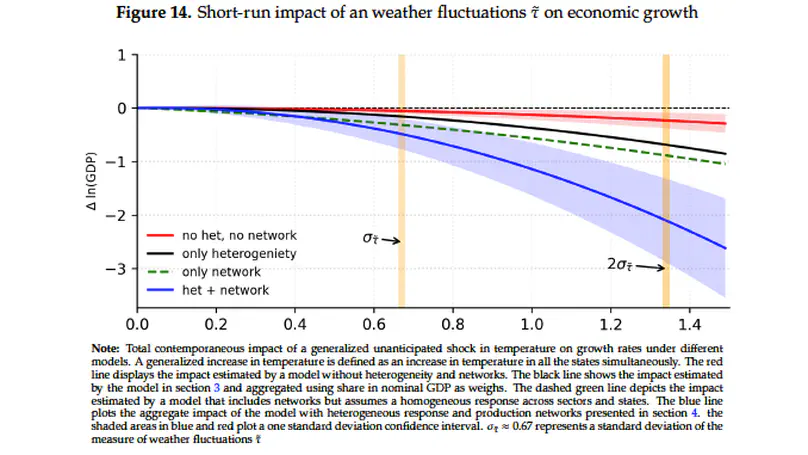I am a Ph.D. Candidate in Economics at Boston College. My research interest is primarily concerned with the macroeconomic effects of climate change and weather variability. In particular, how changes in weather conditions affect heterogeneously across regions and sectors in the United States and Small Open Economies.
I will be on the job market in the academic year 2023-2024 and am available for interviews at the ASSA meetings.
Interests:
- Macroeconomics of Climate Change , International Finance , and Small Open Economies
Research

This paper studies the macroeconomic implications of state and sector specific sensitivity toweather fluctuations and interregional production networks in the United States. I build a general equilibrium model where the impact of weather fluctuations on productivity is state-sector dependent, and networks expose sectors to weather shocks from other regions through the use of intermediate inputs. I use annual data on sectoral GDP andweather by state from 1970 to 2019 to quantify these mechanisms. My estimates show that models that do not consider these characteristics underestimate the aggregate impact ofweather fluctuations by at least a factor of 3. In particular, when the whole economy faces an unexpected increase in temperature of 1 Celsius degree, the contraction in economic activity increases from -0.13 to -0.37 percent once heterogeneity is considered and to -1.14 percent when networks are included.

Terms of trade have been largely considered an important determinant of business cycles in Small Open Economies (SOEs). Current estimates of their contribution to fluctuations in real variables show a large variability and do not exploit the full information from global indicators to improve their reliability. In this paper, I propose a novel strategy that allows me to separately identify innovations in terms of trade and global variables by extending the news identification approach. Results show that the proposed method successfully identifies a global component and suggests that it explains about a half of output volatility in emerging countries and around one-third for developed commodity exporters, while terms of trade idiosyncratic movements are responsible only for 10 percent.